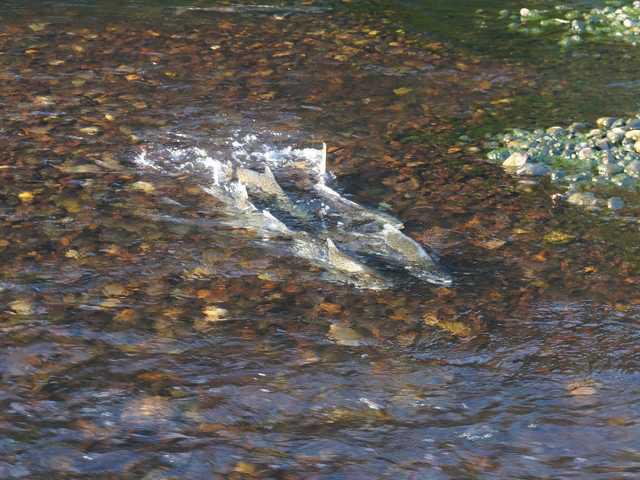For years, the Bureau of Reclamation has tried to comply with the Endangered Species Act when it comes to protecting Chinook salmon and steelhead on the Stanislaus River by releasing more and more water.
Legislation signed by President Obama in the waning days of his administration contains specific language requiring federal agencies to work with the South San Joaquin Irrigation District and Oakdale Irrigation District to address the best ways to protect Chinook salmon. Specifically it directs the Secretary of Commerce and the National Marine Fisheries Service to research the impact of non-native predators such as bass on Stanislaus River salmon and to develop a pilot program to address the problem.
The legislation authored by Congressman Jeff Denham, R-Turlock, working in concert with SSJID and OID, could ultimately increase the endangered salmon’s population and reduce water releases that have been ramped up with no back-up research in a bid to improve survival rates.
It is part of what SSJID General Manager Peter Rietkerk has called a “holistic approach” to protecting fish on the Stanislaus while addressing urban, agricultural and environmental water needs.
A 2008 study showed that the non-native smallmouth bass on the Yakima River in the Columbia River Basin consumes up to 7,000 salmon per day with 98 percent of them being sub-yearling Chinook salmon.
The National Ocean and Atmospheric Administration has used such studies ton conclude “non-native species are cited as a cause of endangerment for 48 percent of the species listed under the federal Engendered Species Act in the Pacific Northwest.
That research was among various studies leading to rule changes that has helped endangered salmon and steelhead on the Columbia River in the Pacific Northwest to enjoy higher survival rates.
The bag limits of non-native predators such as bass, walleye, and catfish were removed and the size of the allowable catch decreased first by the Washington Fish and Wildlife Commission in 2015. Then in early 2016 the Oregon Department of Fish and Wildlife followed suit to coordinate with Washington’s efforts to protect endangered salmon and steelhead.
The SSJID and OID are supporting a petition being considered by the Department of Fish and Game Commission to implement the same tools in California to help the federally protected salmon and steelhead.
The requested fishing regulation changes are as follows:
uBLACK BASS: Decrease the size limit from 12 inches to 8 inches while increasing the daily bag limit from 5 fish to 10 fish.
uSTRIPED BASS: Decrease the size limit from 18 inches to 12 inches while increasing the daily bag limit from 2 fish to 6 fish.
Striped, largemouth, and smallmouth bass as well as white and channel catfish are all non-native fishes that consume ESA-protected species in Sacramento-San Joaquin waterways based on studies conducted by Fishbio.
The SSJID-OID proposal piggybacks on a 2010 National Marine and Fisheries Service call for regulations aimed at reducing non-native fish predation on federally protected salmon and steelhead trout in the Sacramento-San Joaquin Delta.
Some experts believe data supports the projection that as much as 90 percent of the native salmon are consumed by non-native predators in the Delta before they reach the Stanislaus River. The fate of the salmon are sealed by additional releases of water that allow bass to thrive as opposed to the salmon that do better fending off attackers in lower water flows.
Rietkerk noted the legislation as adopted opens the door to looking at everything from dissolveed oxygen and habitat restoration to the timing and size of pulse flows in a bid to get the best results for fish.
To contact Dennis Wyatt, email dwyatt@mantecabulletin.com
EATING ENDANGERED SPECIES
Non-native bass part of Stanislaus study





